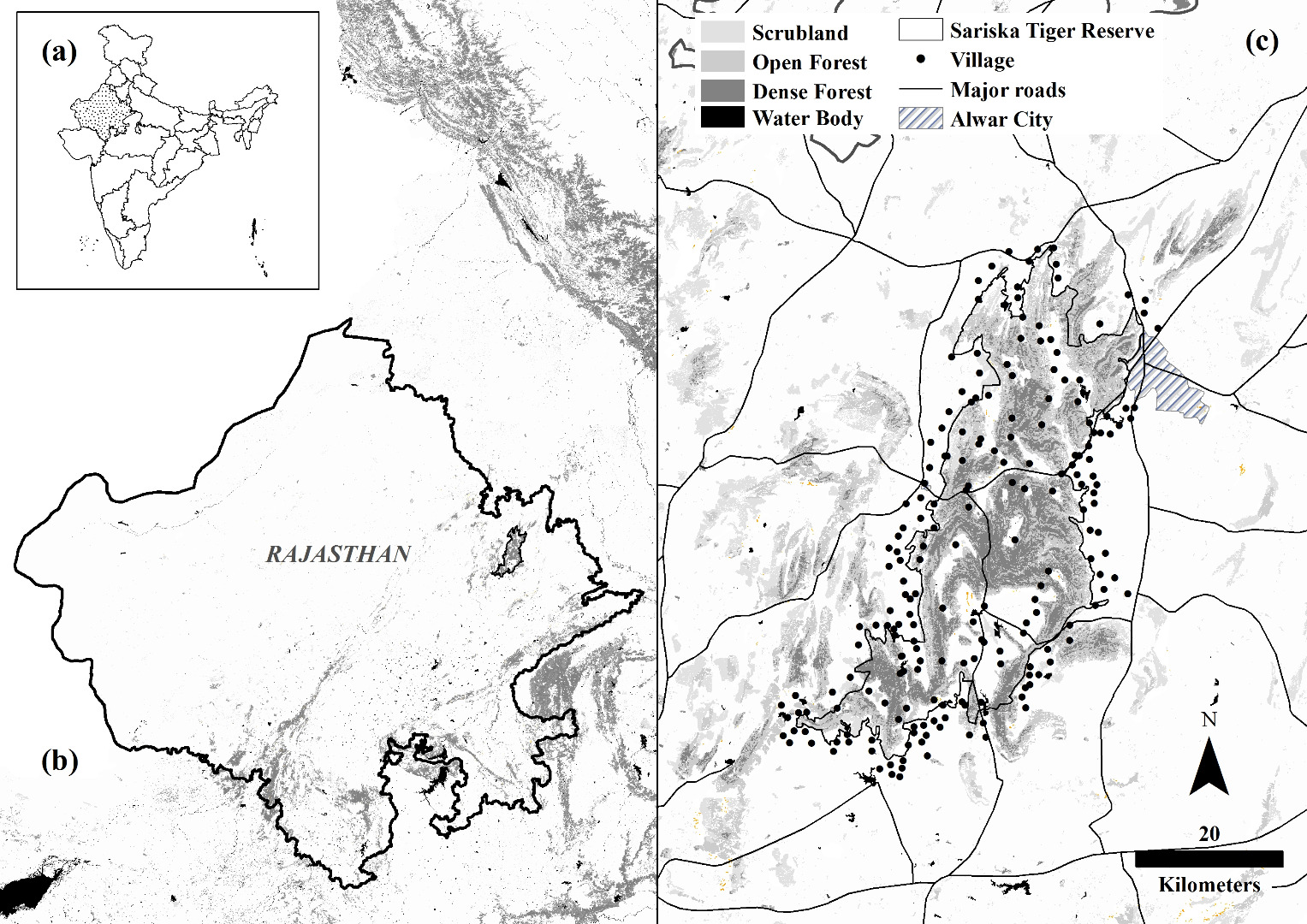- Home
- :
- All Communities
- :
- User Groups
- :
- Conservation GIS
- :
- Documents
- :
- Dibyendu Mandal, India
- Subscribe to RSS Feed
- Mark as New
- Mark as Read
- Bookmark
- Subscribe
- Printer Friendly Page
- Report Inappropriate Content
Dibyendu Mandal, India
Dibyendu Mandal, India
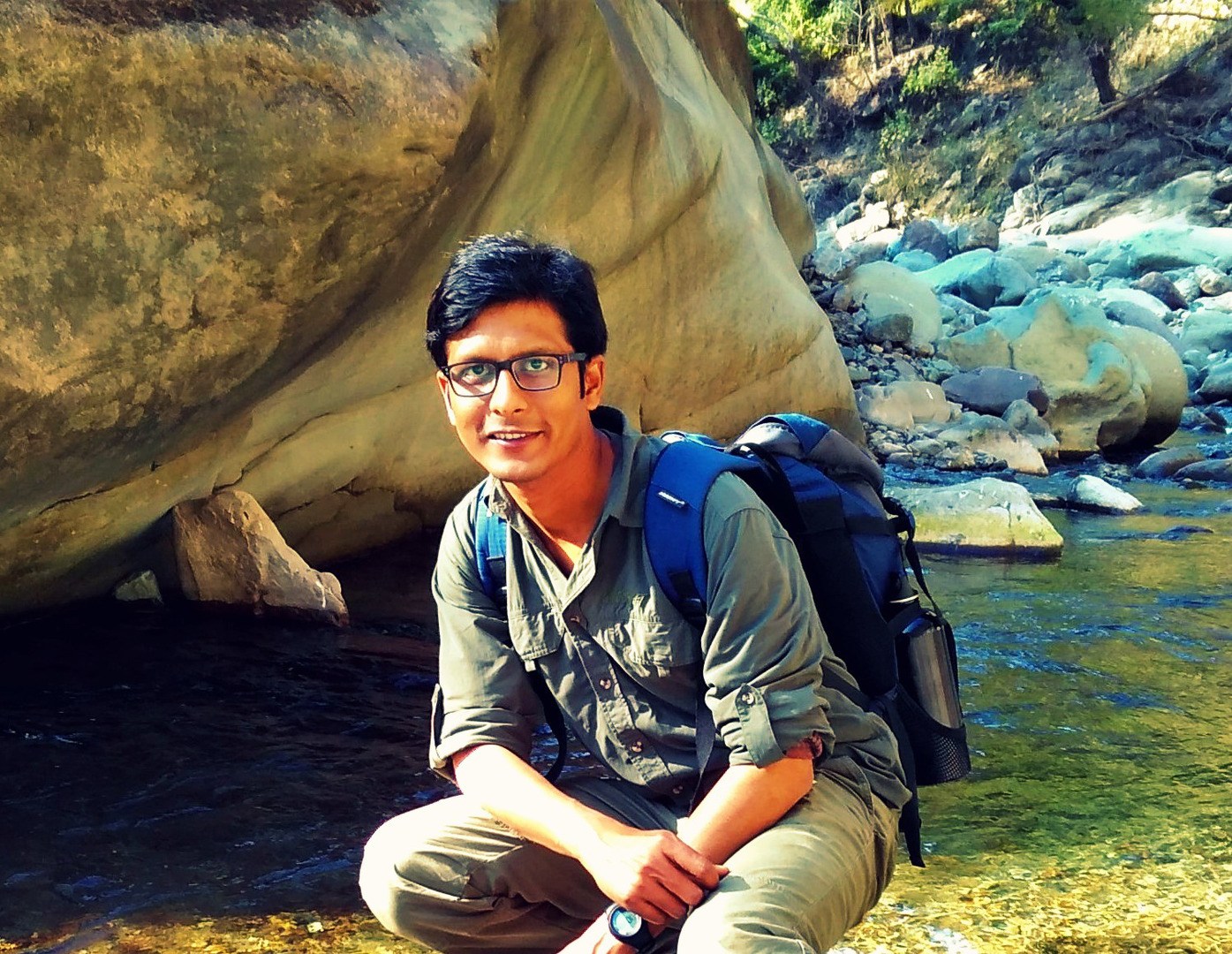
Navigation: 2018 Scholar Project ReferenceProject CommunitiesPage ConservationGIS Scgis.org
PhD Candidate
Wildlife Institute of India
Chandrabani, Dehradun, Uttarakhand, India 248001
Email: wii@wii.gov.in Website: http://wii.gov.in/
xWildlife xMammal xTracking xJournalism x2018Scholar x2018Talk xScholar xTalk xIndia xAsia
Whats App & Skype: +91 7579402093
Email: dibyendu86@gmail.comdibyendu@wii.gov.in
Twitter Handle: https://twitter.com/thesilenthyena
Research Gate: https://www.researchgate.net/profile/Dibyendu_Mandal
2018 Scholar Program Video Introduction:
http://www.conservationgis.org/scgis/2018/__ScholVids/DibsFri12.mp4
ORGANIZATION’S WORK
WII is an internationally acclaimed Institution, which offers a training program, academic courses and advisory in wildlife research and management. The Institute is actively engaged in research across the breadth of the country on biodiversity related issues. It has the following aims and objectives:
- Build up scientific knowledge on wildlife resources.
- Train personnel at various levels for conservation and management of wildlife.
- Carry out research relevant to management including the development of techniques appropriate to Indian conditions.
- Provide information and advice on specific wildlife management problems.
- Collaborate with international organizations on wildlife research, management, and training.
- Develop as a regional center of international importance for wildlife and natural resource conservation.
WII also conducts M.Sc., Diploma, Certificate courses and additional need based short-term courses catering to needs of practitioners from various conservation sectors in India and abroad.
ROLE IN THE ORGANIZATION
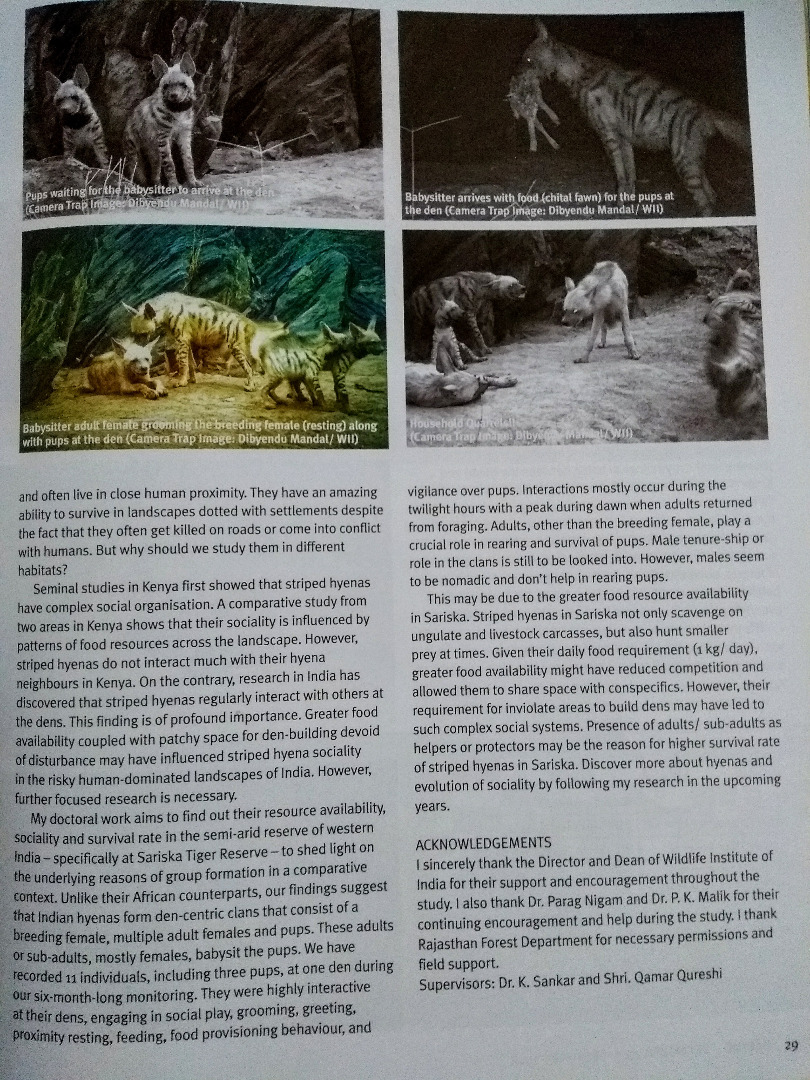
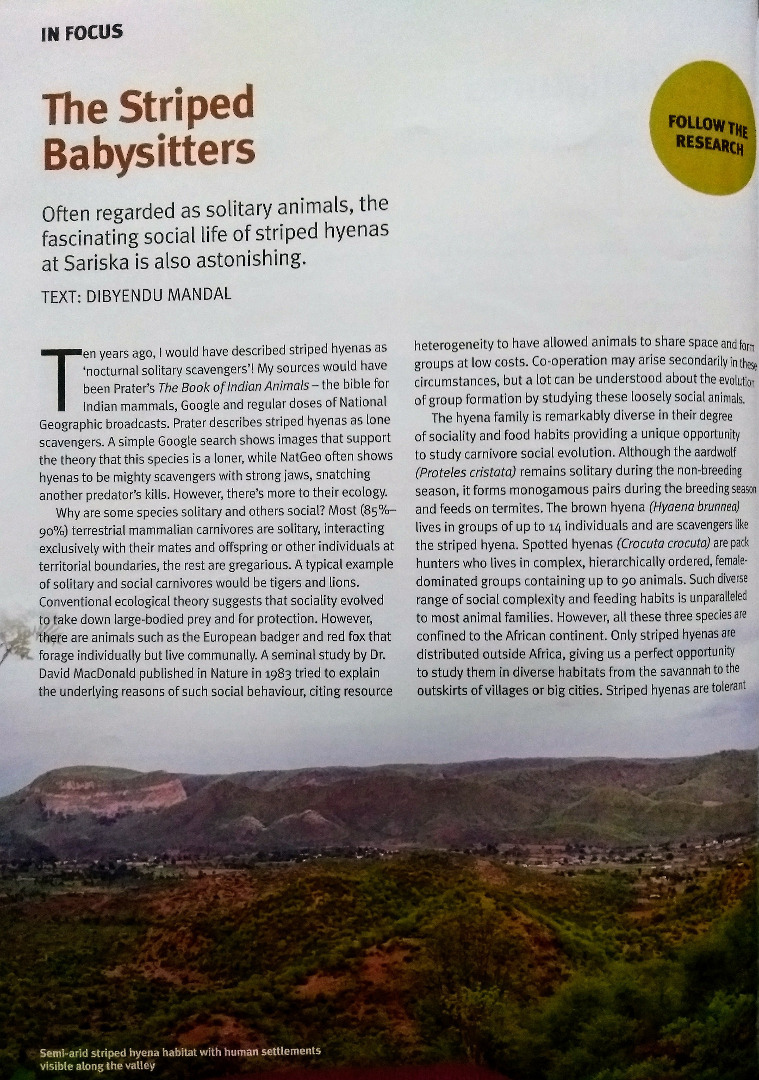
I am a final year PhD student at the Institute. My primary interest is large carnivore ecology, behavior and conservation in human dominated landscape. I conduct my research in Sariska Tiger Reserve, which is situated in the semi-arid landscape of north-western India.
I am working on striped hyena ecology and behavior for my doctoral study. I have two objectives primarily.
Firstly, I am trying to understand how striped hyenas persist in such high densities in human dominated landscape by studying their survival rate, resource utilization pattern (den site & habitat selection, diet, their relation with other carnivores and humans) and sociality using long term data. My findings suggest, although they survive in high densities in human dominated landscape, road related mortality has a long term impact on striped hyena population dynamics.
I also use striped hyenas as a model species and studied their behavior under the framework of Resource Dispersion Hypothesis to understand carnivore social evolution.
I also work on reintroduced tiger ecology and conservation in Sariska. Sariska lost all its tiger to poaching in 2004. Eight tigers have been radio collared and reintroduced in Sariska during 2008 – 13 to build a self-sustaining population. I have been studying their ranging pattern and diet to assist active population management.
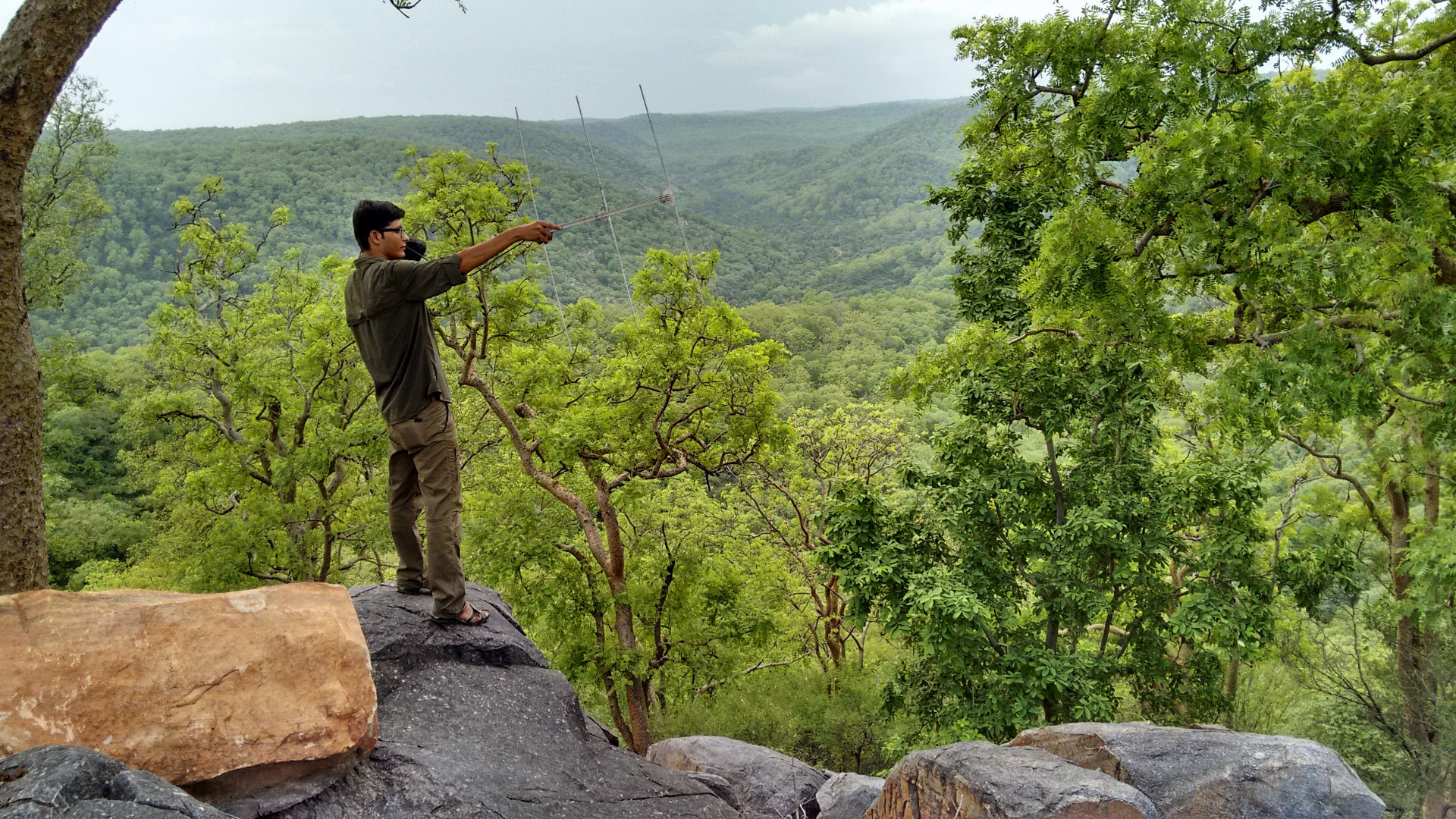

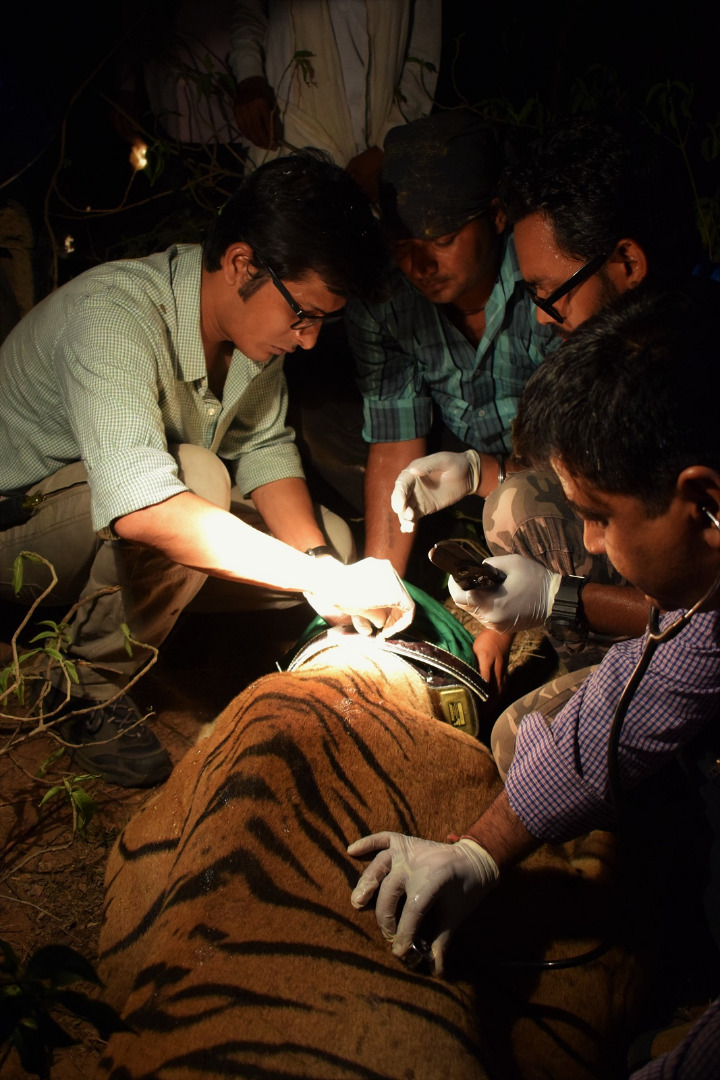
HISTORY
During the last eight years, I have primarily worked on large mammal ecology and conservation throughout India. I have worked both inside and outside protected areas. I worked with Wildlife Trust of India (WTI, non-governmental organization) for nearly three years prior to joining Wildlife Institute. During this time, I assessed tiger, leopard and striped hyena population densities, worked on elephant corridors, assisted in preparation of national action plan for bears and assessed change in hornbill abundance after artificial hornbill beak distribution & awareness program.

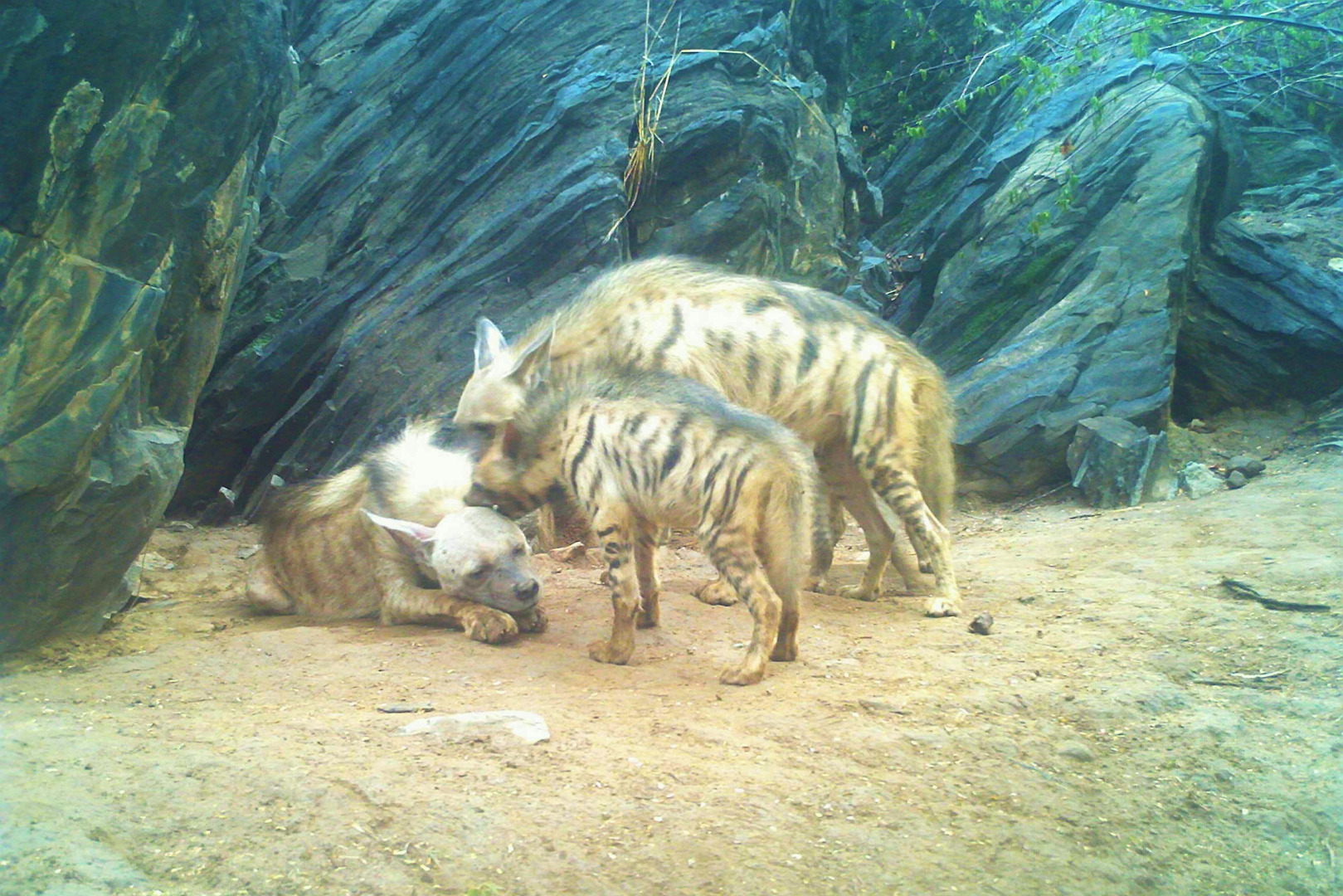


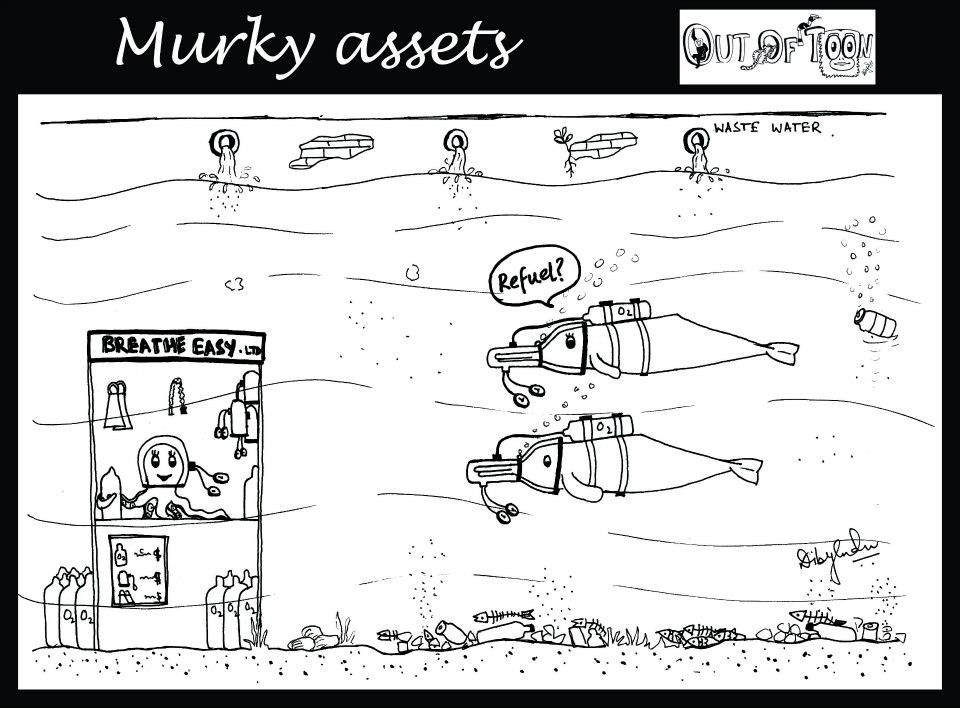
I am a cartoonist and illustrator by passion. I am fascinated by the scope of using visual media to spread awareness and use my leisure time to make cartoons on issues related to wildlife conservation. I used to make cartoons for WTI’s biweekly online cartoon series ‘Out of Toon’. I have also made cartoons and logos voluntarily for different organizations in the past.
ROLE IN THE LOCAL SCGIS CHAPTER
We don’t have a SCGIS India chapter. We are trying to form SCGIS India chapter to help GIS practitioners and conservation biologists.
TEACHING & LEADERSHIP
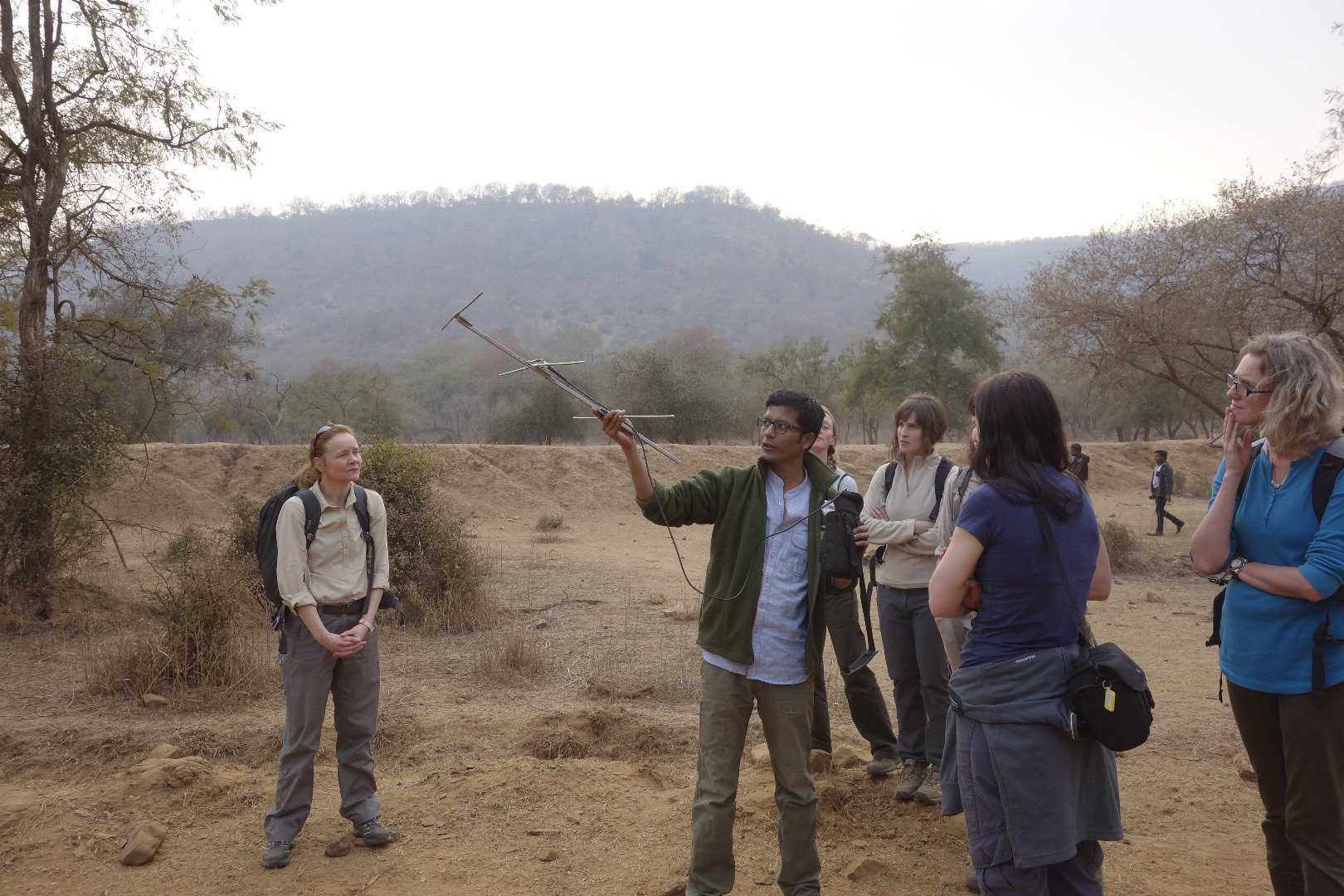
 I have been actively associated with training of forest officials and international students for the last four years. In total, I have been part of ten one week to month long training exercises and trained students and forest officials about wildlife techniques such as radio telemetry, camera trapping, occupancy, distance sampling and use of physical restraints during interventions as a teaching assistant.
I have been actively associated with training of forest officials and international students for the last four years. In total, I have been part of ten one week to month long training exercises and trained students and forest officials about wildlife techniques such as radio telemetry, camera trapping, occupancy, distance sampling and use of physical restraints during interventions as a teaching assistant.
LEARNING GIS
I used to rely on online materials and YouTube tutorials for learning GIS primarily. In case of non-availability of online materials, I seek help from peers and colleagues who are trained in GIS.
MY CURRENT GIS CAPABILITY/ EXPERTISE
Over the last eight years, I have primarily worked with ArcGIS and QGIS and prepared study area maps, home range maps of tigers and did some preliminary analysis. I also use ArcGIS to export zonal stats on landscape scale for different ecological analysis.

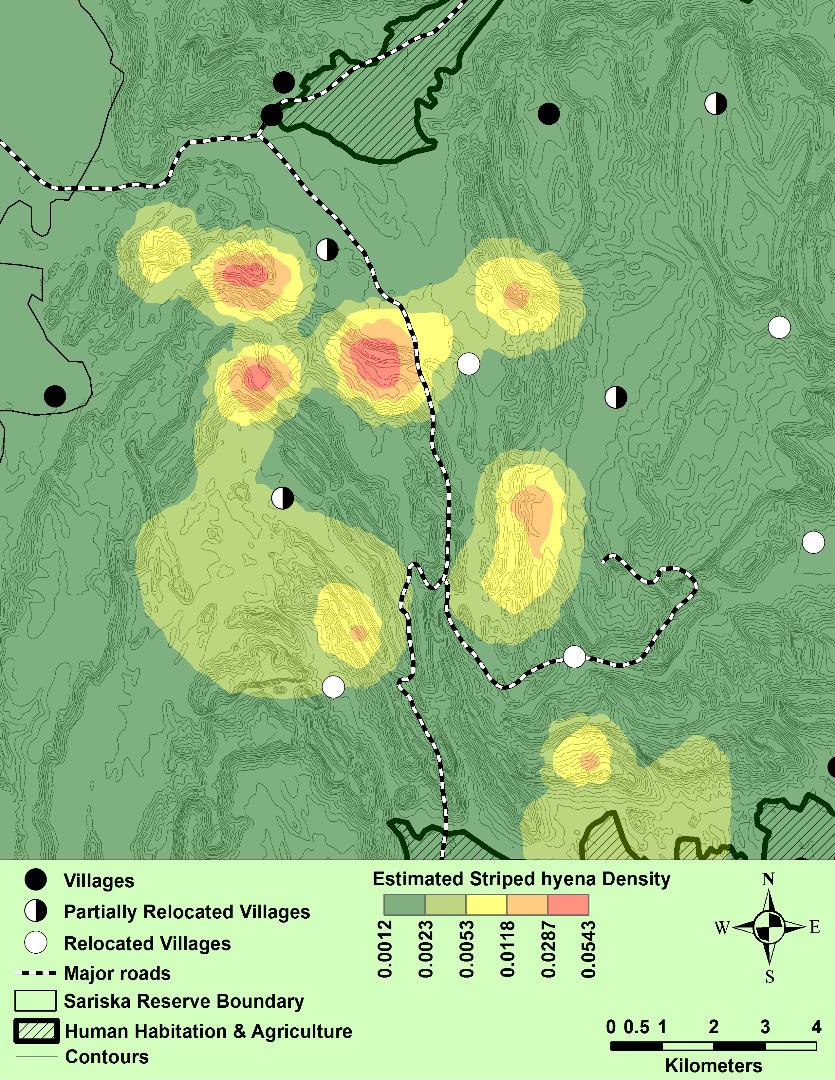
Figure: Sariska Tiger Reserve, Surface density of striped hyena and annual home range of tigers in Sariska
